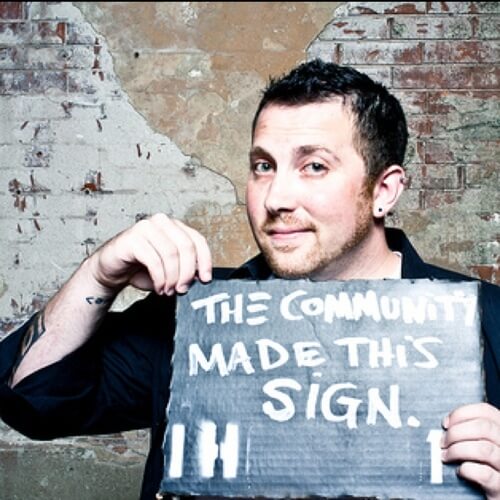In 2007, when Geoff and I sat down to figure out how to make Indy Hall a real place for the real people we’d already recruited, we made a decision to operate it as a business.
This came largely from Geoff’s experience with art co-ops, where a bunch of friends all “chip in” to rent studio space. Eventually, somebody screws somebody else, intentionally or not. Eventually, the group is short on renters, and as a result, rent. Eventually, somebody needs to be accountable, and in a group of friends, that’s going to put at least one person on the outside.
It also came from the fact that we were doing something big. Not just big for us, but our vision was grand. This was something that we both wanted (for some different reasons, too), but ultimately, was something we thought should – and could – live beyond us.
Today, our bookkeeper said called Geoff an “Empire Builder”, and I think she’s right.
Geoff knows the difference between a short, reversible decision and a long-impacting one, even though one often looks like the other.
I’ve been lucky to learn from that, and come to my own conclusions over time.
It has nothing to do with profit.
Coworking seems to have been divided into two camps: the altruistic camp, and the for profit camp. I won’t comfortably deny some of the credit for this divide, since I’ve been known to call clearly profit-drivin initiatives out on it.
But in hindsight, even I missed the point.
There aren’t any camps, only successful and sustainable coworking spaces.
What’s important is that the people who win aren’t necessarily the owners and operators, but the inhabitants.
The members.
The decision to make Indy Hall a for-profit business was a design decision made by Geoff and I, one made to future-proof Indy Hall not only for it’s current members but also it’s members-to-be.
2010 has been an interesting year for me, personally. I’ve taken on a lot of new work, and along with some of that work came the baggage of needing to work from somewhere other than Indy Hall. While working with that client proved valuable in many different ways, I wouldn’t have made the decision in the first place if I didn’t think about the broader implications.
In short, by forcing myself to minimize the amount of work and attention I could pay to Indy Hall in 2010, we would expose stress cracks in our processes, and force us to further streamline. More importantly, we’d see what Indy Hall could do on it’s own without me on site every day and without me dedicating a significant portion of my time to community involvement as I had for the years prior.
As we wrap up the year, I plan to publish some of the positive – and negative – effects of my reduced involvement as a co-founder and a daily voice in the community. We saw social effects. We saw financial effects. We saw operational effects.
Ultimately though, 2010 was the year that I was able to prove to myself that while Indy Hall may not be designed for profit, it is and can continue to be profitable. More importantly, it is designed for sustainability: a model that anything other than a business would not be able to ensure.
 I am always thinking about the intersection of people, relationships, trust and business. I founded
I am always thinking about the intersection of people, relationships, trust and business. I founded